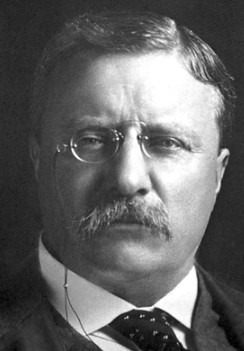After winning the 1904 election, Theodore Roosevelt stated that he will no longer run at the end of this term. The said statement further gave more reason for the conservative wing of the Republic party to repudiate the progressive policies TR started. Yet, Roosevelt never flinched and continued his reformist approach. But before we discuss more about the political career of Theodore Roosevelt, let’s find out first the processes involved in Betting on Politics.
As the 1908 election approached, he selected Secretary of War William Howard Taft as his successor, deeming that the latter can carry on the progressive policies he started. With this support, Taft got the Republican nomination and eventually won the 1908 election against Democrat candidate William Jennings Bryan.
After leaving the White House, Roosevelt got the opportunity to go back into his passion, reading, writing, traveling, and natural history. Along with his son Kermit, Roosevelt went to Africa for a scientific expedition and hunting safari in March of 1909.
His party brought home hundreds of trophies and specimens for New York’s American Museum of Natural History and the Smithsonian Institution. He recounted his safari trip in his book, African Game Trails, providing a detailed account of the people he met, the flora and fauna he encountered, and the thrilling experience of the chase.
In June 1901, Roosevelt returned to the United States only to be dismayed by the policies his chosen successor, Taft, had implemented. While Taft pledged to continue T.R. progressive reforms, he sided with the conservative branch of the Republican Party. Heavily enraged about Taft’s choice and failure to pursue his “cherished” initiatives, Roosevelt made a decision to run in the 1912 presidential election.
Roosevelt went head-on with Taft in the Republican nomination. However, it went for naught as Taft secured candidacy from the party. To resolve this, he and members of the progressive wing bolted out and formed the “Bull Moose Party,” appointing Roosevelt as their presidential candidate.
During his campaign in Milwaukee, Wisconsin on October 14, 1912, Roosevelt became a target of an assassination attempt. John Flammang Schrank, a former saloonkeeper, shot him prior to giving his address to the public. Thanks to the folded speech and the steel eyeglass case located in his vest pocket, the force was lessened, saving Roosevelt’s life.
Despite having a bullet stashed in his chest and seeping blood from the wound, Roosevelt refused to get medical attention. Being an anatomist and a skilled hunter, he knew the bullet didn’t reach his lungs and continued with his speech, speaking in front of the crowd for nearly 90 minutes.
The rift in the Republican party affected their cause, assuring the victory for the Democrat candidate Woodrow Wilson. True enough, Woodrow Wilson won the presidency, earning 435 votes. Roosevelt came second with 88, while Taft finished at a distant third with only 8 electoral votes.
Two years after his loss, Roosevelt and Kermit embarked on another expedition, but this time in Brazil to explore its interior and traverse an uncharted river. While in the county, TR contracted malaria, suffered a leg injury due to a boat accident, and lost much weight. Roosevelt returned to the United States, weakened and older in appearance. He went on writing history books and scientific essays but never regained his full health.
During the outbreak of the First World War, TR campaigned for the country to prepare for the conflict by solidifying and improving its national defenses. Yet, President Wilson chose to follow a policy of neutrality, which Roosevelt spurned. Eventually, Wilson decided to shove the nation into war, citing that the world must be made safe for democracy.
Roosevelt’s sons joined the war in Europe. On July 16, 1918, Quentin, his youngest son, died in an air battle against a German pilot. While he was adamant about the significance of fighting for the country, TR never fully recuperated from his son’s death.
On January 6, 1969, Roosevelt died in his sleep due to pulmonary embolism. Vice President Thomas Marshall commented that death had to happen to Roosevelt while asleep, as there would have been a fight if he had been awake, referring to Roosevelt’s undaunted personality. TR spent his last day in their beloved home in Oyster Bay, New York. He was buried at a hillside in Youngs Memorial Cemetery, overlooking Oyster Bay.
